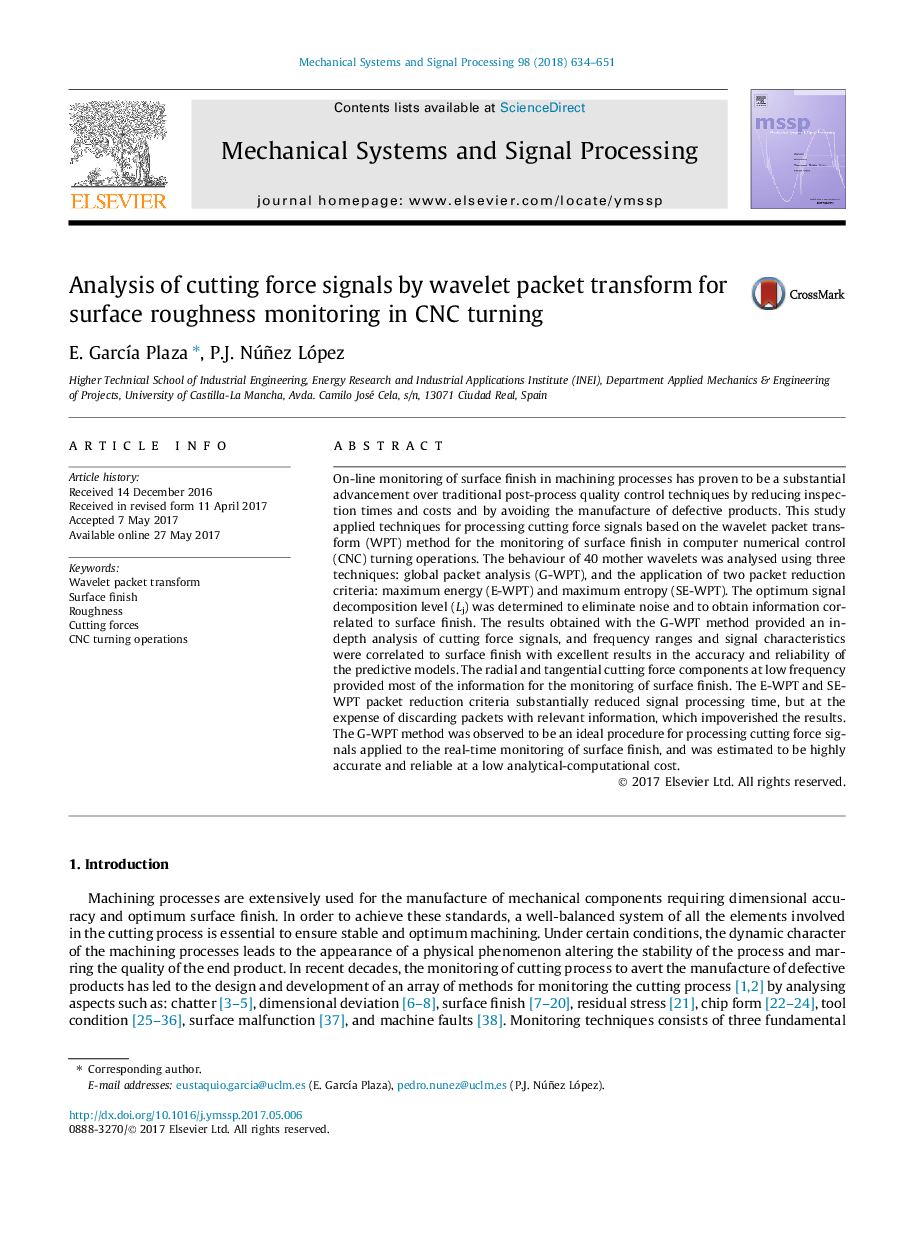| کد مقاله | کد نشریه | سال انتشار | مقاله انگلیسی | نسخه تمام متن |
|---|---|---|---|---|
| 4976890 | 1451837 | 2018 | 18 صفحه PDF | دانلود رایگان |

- Mother wavelet daubechies06 in the decomposition level L4 obtained the best results.
- Radial and tangential forces were primary data source in monitoring of roughness.
- Fusion of the three Cartesian cutting forces components providing the best results.
- Packet reduction methods based on maximum energy/entropy deteriorated the results.
- Global analysis of packets was the most efficient method for monitoring roughness.
- Surface finish was monitored with accuracy, reliability and low computational cost.
On-line monitoring of surface finish in machining processes has proven to be a substantial advancement over traditional post-process quality control techniques by reducing inspection times and costs and by avoiding the manufacture of defective products. This study applied techniques for processing cutting force signals based on the wavelet packet transform (WPT) method for the monitoring of surface finish in computer numerical control (CNC) turning operations. The behaviour of 40 mother wavelets was analysed using three techniques: global packet analysis (G-WPT), and the application of two packet reduction criteria: maximum energy (E-WPT) and maximum entropy (SE-WPT). The optimum signal decomposition level (Lj) was determined to eliminate noise and to obtain information correlated to surface finish. The results obtained with the G-WPT method provided an in-depth analysis of cutting force signals, and frequency ranges and signal characteristics were correlated to surface finish with excellent results in the accuracy and reliability of the predictive models. The radial and tangential cutting force components at low frequency provided most of the information for the monitoring of surface finish. The E-WPT and SE-WPT packet reduction criteria substantially reduced signal processing time, but at the expense of discarding packets with relevant information, which impoverished the results. The G-WPT method was observed to be an ideal procedure for processing cutting force signals applied to the real-time monitoring of surface finish, and was estimated to be highly accurate and reliable at a low analytical-computational cost.
Journal: Mechanical Systems and Signal Processing - Volume 98, 1 January 2018, Pages 634-651